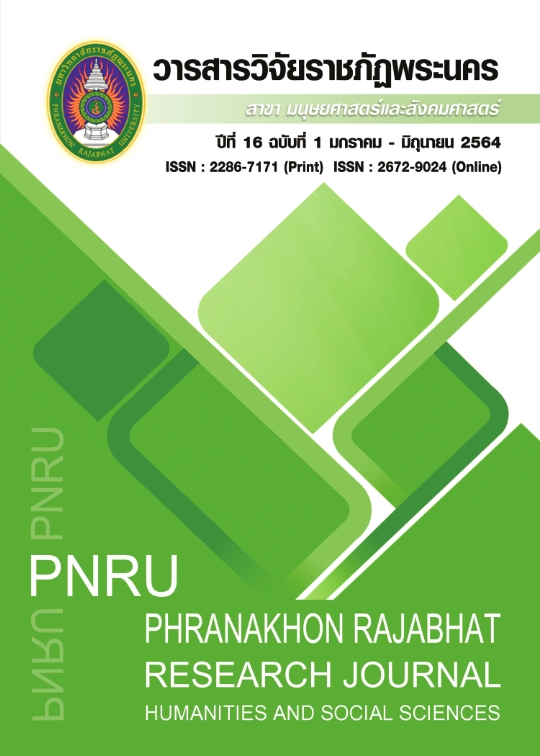FROM CULTURE LEARNING TO TEACHING: UNDERSTANDING CULTURES TO ACHIEVE INTERCULTURAL COMMUNICATION COMPETENCE
Main Article Content
Abstract
It is undeniable that communication breakdowns due to misunderstandings, leaving communicants in frustration or anger, are commonly evident in cross-cultural contexts. Learners of any foreign languages therefore do not simply require the linguistic knowledge of the target language alone, but intercultural communication competence must be taken into account in achieving cross-cultural communicative purposes. Given that both are important skills needed in any interactions held by people of cross-cultural backgrounds, a TESOL practitioner or an instructor of other languages should realize and implement some cultural issues into class, aiming not to create a fluent fool in the real contexts of intercultural communication. In contributing to the profession, this bibliographic journal has been written to reflect the path along which I, as a language teacher, have been through from experiencing communication breakdowns which directed me to explore different cultural issues in the following steps: (1) challenges of intercultural communication, (2) intercultural sensitivity, (3) values and rules, (4) kinesics and cross-cultural understanding, and (5) cultural-intercultural dimensions of the language, in which the content inspired me towards implementing cultural issues into my teaching contexts. This article also includes an example class implementation on intercultural sensitivity and tolerance relating to nonverbal behaviors, face management, and politeness to demonstrate the possibility to integrate cultural issues in any language lessons, and to prove the significance of direct fact-teaching method. The trial was carried out with two groups of English for Communication-majored students taking English for Presentation by using different teaching approaches: Teaching first – Experience later and vice versa. Both observation and student reflections through interview were made during and after Experience step respectively, resulting in a supporting nuance of the role of direct-teaching of cultures particularly for the contexts in which most of the learners share basically similar cultural backgrounds.
Article Details
Each publish articles were copyright by Phranakorn Rajabhat University
Any contents which appeared in each articles in the journal were authors personal opinion. It did not relate to Phranakorn Rajabhat University and other instructors in the university. Each authors would take responsibility on their articles. If there are any mistake, the authors will take responsibility themselves
References
Andersen, P. (2000). Cues of culture: The basis of intercultural differences in nonverbal communication. In L. A. Samovar, & R. E. Porter (eds.), Intercultural communication: a reader (pp. 258-270). Belmont, CA: Wadsworth (9thed.).
Bennett, M. J. (1997). How not to be a fluent fool: Understanding the cultural dimension of language. In A. E. Fantini (ed.), New ways in teaching culture (pp. 16-21). Virginia: TESOL Inc. Press.
Brown, H. D. (2002). English language teaching in the “post-method” era: Toward better diagnosis, treatment, and assessment. In J.C. Richards, & W.A. Renandya (eds.), Methodology in language teaching: an anthology of current practice (pp. 9-18). USA: Cambridge University Press.
Cannon, R. & Newble, D. (2000). Helping students learn. In A handbook for teachers in universities and colleges: A guide to improving teaching methods (pp. 1-15). Glasgow: Kogan Page (4thed.).
Chen, G. & Starosta, W. J. (2000). Intercultural sensitivity. In L. A. Samovar, & R. E. Porter (eds.), Intercultural communication: a reader (pp. 406-413). Belmont, CA: Wadsworth (9thed.).
Fantini, A. E. (1997). Language: Its cultural and intercultural dimensions. In A. E. Fantini (ed.), New ways in teaching culture (pp. 3-15). Virginia: TESOL Inc. Press.
Gallois, C. & Callan, V. J. (1997). Introduction: The challenge of intercultural communication. In Communication and culture: A guide for practice (pp. 1-20). New York: Wiley.
Gallois, C. & Callan, V. J. (1997). Values and rules: The impact of culture on communication. In Communication and culture: A guide for practice (pp. 21-42). New York: Wiley.
Morain, G. G. (1986). Kinesics and cross-cultural understanding. In J. M. Valdes (ed.), Culture bound: Bridging the cultural gap in language teaching (pp. 64-76). Cambridge: Cambridge University Press.
Shumin, K. (2002). Factors to consider: Developing adult EFL students’ speaking abilities. In J.C. Richards, & W.A. Renandya (eds.), Methodology in language teaching: an anthology of current practice (pp. 204-211). USA: Cambridge University Press.


